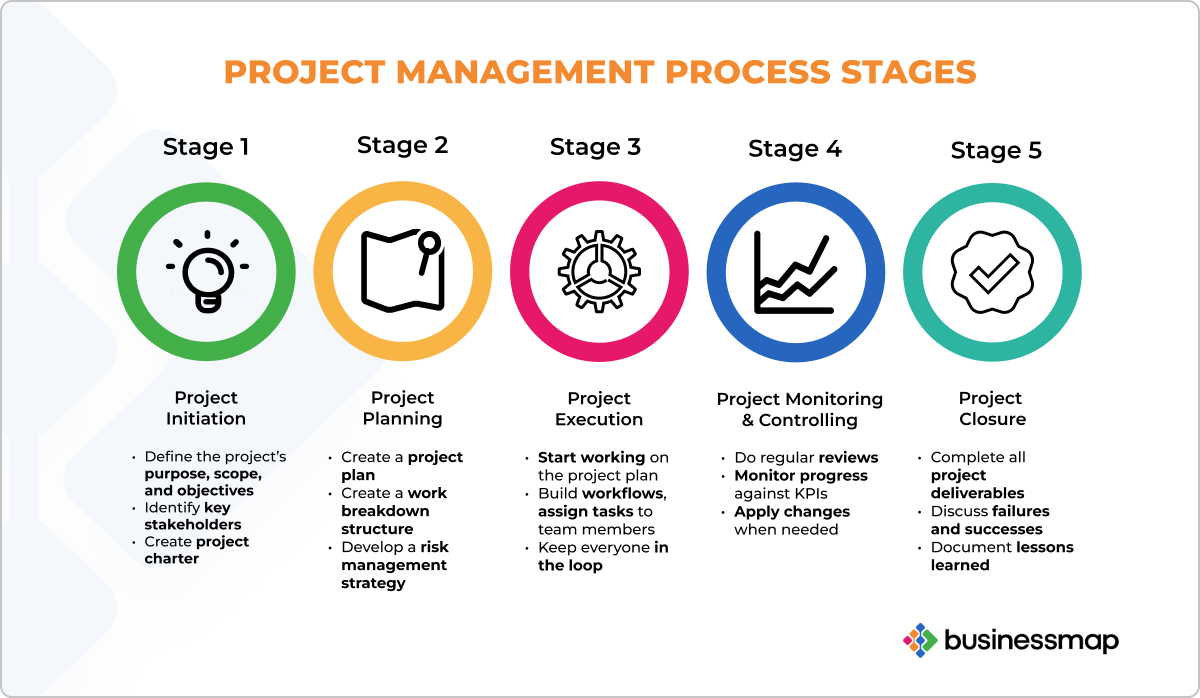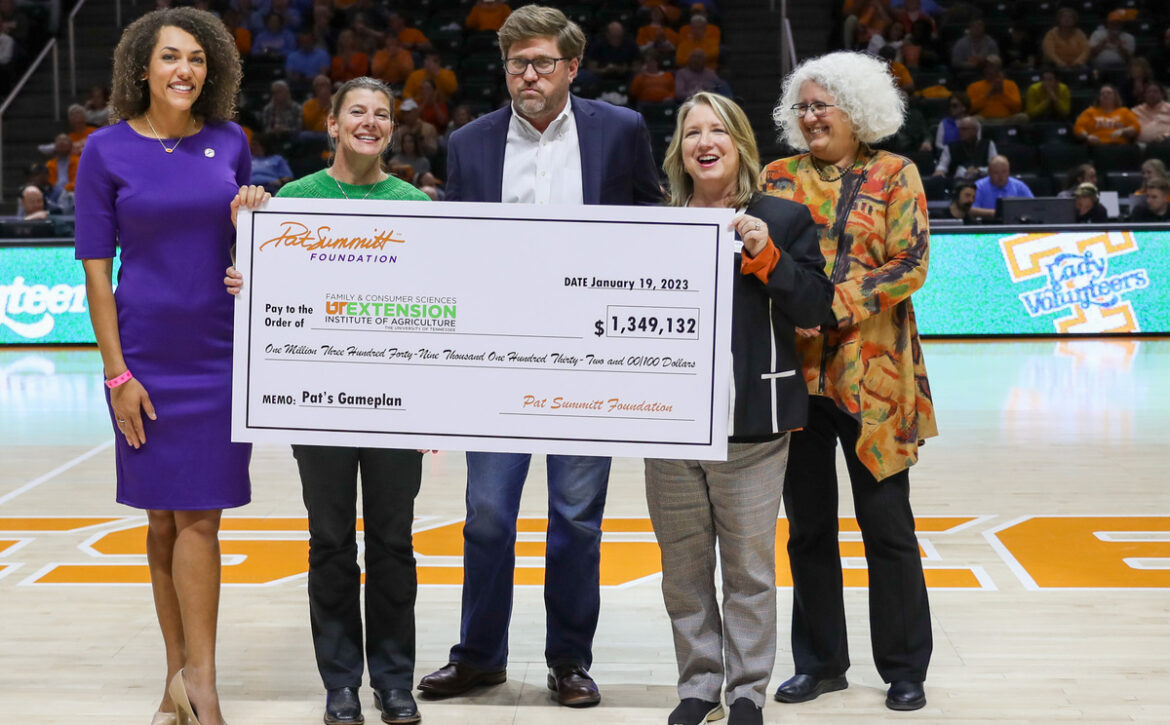
The Complete Agile Project Manager: Master Your Projects
Agile project management transforms how teams work. It boosts efficiency and flexibility.
Understanding agile practices is crucial for project success today. Many managers seek effective ways to implement agile methods. The complete agile project manager guides you through this journey. It offers insights into agile frameworks, tools, and techniques. These elements help streamline processes and improve team collaboration.
Agile empowers teams to adapt quickly to changes. This leads to faster delivery and enhanced quality. Explore how agile project management can benefit your projects. Learn how it fosters innovation and productivity. Dive into the world of agile and discover its potential. Uncover strategies that make you a successful agile project manager. This guide equips you with the knowledge needed to excel in agile project management.
Agile Fundamentals
The Complete Agile Project Manager offers a comprehensive guide to mastering Agile fundamentals. Agile methodology revolutionizes project management by promoting flexibility and adaptability. Understanding Agile fundamentals helps project managers deliver value more efficiently. It emphasizes continuous improvement and team collaboration. This approach ensures projects remain aligned with customer needs and market changes. Agile fundamentals provide the foundation for effective project management, enabling teams to work cohesively and respond to feedback swiftly.
Key Principles
The Agile methodology is built on several key principles that shape how projects are managed. These principles focus on delivering value efficiently and adapting to changes seamlessly. At the core of Agile lies continuous improvement. Teams are encouraged to evaluate their processes regularly and make necessary adjustments. This leads to enhanced productivity and quality. Team collaboration is another vital principle. Agile promotes open communication and teamwork. This ensures everyone is aligned with the project’s goals. Agile uses frameworks like the Scrum Framework and Kanban System. These frameworks facilitate iterative development and organized workflow, essential for efficient project management. Agile principles also emphasize customer feedback. Regular feedback allows teams to refine their work according to customer expectations.
- Continuous Improvement
- Team Collaboration
- Scrum Framework
- Kanban System
- Customer Feedback
Overall, these principles guide teams in sprint planning and ensure that value delivery is prioritized.
Agile Manifesto
The Agile Manifesto is a declaration of values and principles that guide Agile project management. It emphasizes a human-centric approach, prioritizing individuals and interactions over processes and tools. Four core values define the Agile Manifesto:
- Individuals and interactions over processes and tools.
- Working software over comprehensive documentation.
- Customer collaboration over contract negotiation.
- Responding to change over following a plan.
The manifesto encourages teams to focus on delivering functional products through iterative development. This approach allows for quick adjustments based on feedback. Agile methodology values direct communication with stakeholders. This ensures the project aligns with customer needs. Adapting to change is crucial in Agile. Teams remain flexible, ensuring project outcomes meet evolving requirements. The Agile Manifesto guides project managers in balancing structured processes with dynamic collaboration. It serves as a blueprint for achieving effective value delivery.
Roles In Agile
Agile project management is a dynamic approach that embraces change and fosters collaboration. One of its core strengths lies in clearly defined roles. These roles ensure efficiency and effectiveness in project delivery. Understanding these roles is crucial for anyone involved in Agile projects. Let’s dive into the key roles within the Agile methodology: Scrum Master, Product Owner, and Team Members.
Scrum Master
The Scrum Master is a vital role within the Scrum Framework. This person acts as a facilitator, ensuring the team adheres to Agile principles. They remove obstacles that might hinder the team’s progress. Their main goal is to promote a culture of continuous improvement and effective team collaboration. Key responsibilities include:
- Facilitating sprint planning and daily stand-ups
- Encouraging iterative development processes
- Ensuring all team members understand the Agile methodology
- Helping the team with stakeholder engagement
A Scrum Master also plays a crucial role in maintaining the Product Backlog. They ensure it’s transparent and accessible to all. This role requires excellent communication skills and a deep understanding of project management practices.
Product Owner
The Product Owner is the voice of the customer. They manage the Product Backlog, prioritizing items based on business value. This role requires balancing stakeholder engagement with the needs of the development team. Key responsibilities include:
- Defining the product vision and strategy
- Managing and prioritizing the Product Backlog
- Collaborating with stakeholders to gather requirements
- Ensuring the team delivers value in each sprint
The Product Owner must have a clear understanding of the market and user needs. They work closely with the team to ensure the product aligns with the Agile principles. This role demands strong leadership and excellent decision-making skills.
Team Members
The Team Members are the backbone of any Agile project. They are cross-functional professionals who execute the tasks needed to deliver a product increment. Their roles may vary, but their commitment to Agile principles remains constant. Responsibilities of team members include:
- Participating in sprint planning and retrospective meetings
- Collaborating to achieve sprint goals
- Delivering high-quality work in iterative development cycles
- Contributing to continuous improvement processes
Team members thrive on open communication and trust. Their collaboration is essential for adapting to changes and meeting project goals. They ensure the Agile methodology is effectively implemented, driving the project towards success.
Agile Methodologies
The Complete Agile Project Manager is a comprehensive guide for navigating the dynamic world of Agile Methodologies. Agile methodologies offer frameworks that emphasize collaboration, flexibility, and efficiency in project management. These methods focus on iterative development, enabling teams to adapt quickly to changes. Agile Methodology has become a cornerstone in modern project management practices, helping teams deliver high-quality products swiftly.
Scrum
Scrum is a popular Agile framework designed to facilitate teamwork and agile team collaboration. It helps teams deliver products in short cycles called sprints. A sprint usually lasts between one to four weeks. The Scrum Framework includes roles like the Scrum Master, Product Owner, and Development Team. These roles work together to achieve project goals efficiently. In Scrum, the Product Backlog is a crucial element. It contains a prioritized list of tasks and features. During Sprint Planning, the team selects items from this backlog to complete in the upcoming sprint. This approach ensures the team focuses on the most important tasks first.
| Scrum Roles | Responsibilities |
|---|---|
| Scrum Master | Facilitates meetings, removes blockers, ensures adherence to Scrum processes |
| Product Owner | Defines product backlog, prioritizes tasks, represents stakeholders |
| Development Team | Builds product, collaborates on task execution, delivers increment |
Continuous Improvement is a key principle in Scrum. Teams review their work after each sprint. This helps identify areas for improvement and refine the process continually.
Kanban
Kanban is another Agile Methodology that focuses on visualizing work and improving workflow efficiency. Unlike Scrum, Kanban does not prescribe specific roles or time-boxed sprints. Instead, it uses a Kanban Board to visualize tasks and their progress. A Kanban Board typically has columns like “To Do,” “In Progress,” and “Done.” This visualization helps teams understand the current state of tasks and manage workflows more effectively. It emphasizes work-in-progress limits to prevent overload and promote quality output.
- Visual Workflow: Enhances transparency and helps identify bottlenecks.
- Work-in-Progress Limits: Ensures focus and prevents task overload.
- Continuous Improvement: Regularly assesses and optimizes processes.
Kanban promotes Agile Team Collaboration by allowing team members to pull tasks as they complete work. This approach leads to more efficient task management and better resource utilization.
Extreme Programming
Extreme Programming (XP) is an Agile Methodology that emphasizes technical excellence and customer satisfaction. It focuses on Extreme Programming Practices such as pair programming, test-driven development, and frequent releases. XP advocates Iterative Development through short development cycles. This allows teams to adapt to changing requirements quickly. The methodology encourages Agile Team Collaboration by engaging customers and developers throughout the project.
- Pair Programming: Two developers work together at one workstation, enhancing code quality.
- Test-Driven Development: Writing tests before coding ensures functionality.
- Frequent Releases: Delivering small updates regularly keeps stakeholders informed.
Extreme Programming Practices also focus on Continuous Improvement. Teams regularly review their work and seek ways to enhance quality and efficiency. XP’s emphasis on technical practices makes it suitable for complex projects where precision is key.

Planning Agile Projects
Agile project management thrives on adaptability and collaboration. Planning agile projects is a critical step that sets the foundation for success. This process involves organizing tasks, prioritizing requirements, and ensuring that all team members understand their roles. With a focus on iterative development and stakeholder engagement, the agile methodology allows for flexibility and responsiveness. By effectively planning, agile projects can meet changing demands and deliver value continuously.
User Stories
User stories are central to agile project management. They provide a simple way to capture requirements and envision how features will serve end users. Each user story describes a feature from the user’s perspective, emphasizing the value it brings. Consider these important aspects of user stories:
- Simple Language: User stories should be written in clear, concise language. This makes them easy to understand for everyone.
- Format: Typically follows the format: “As a [type of user], I want [action] so that [benefit].”
- Prioritization: User stories are prioritized based on importance and urgency. This helps in effective sprint planning.
Creating user stories involves collaboration between team members and stakeholders. This ensures that the stories align with business goals and user needs. Using techniques like user story mapping, teams can visualize the journey and dependencies, enhancing understanding and planning.
Backlog Management
Backlog management is crucial in the agile framework. The product backlog consists of all tasks and features that are planned but not yet completed. Effective backlog management includes:
- Organizing: Items are organized by priority and relevance. This ensures focus on tasks that deliver the most value.
- Refining: Regular refinement sessions keep the backlog up-to-date. It helps in aligning tasks with current project goals.
- Estimating: Each backlog item is estimated for effort and time required. This aids in better sprint planning.
Different agile frameworks have varying approaches to backlog management. In the Scrum framework, backlog items are selected for sprints based on priority. Kanban, on the other hand, uses a continuous flow approach to manage the backlog. Both methods emphasize stakeholder engagement to ensure the backlog reflects real needs. Below is a simple table illustrating key differences:
| Framework | Approach | Focus |
|---|---|---|
| Scrum | Time-boxed sprints | Iterative development |
| Kanban | Continuous flow | Efficiency and flexibility |
By managing the backlog effectively, teams can ensure smooth project management and timely delivery.
Agile Tools
The Complete Agile Project Manager understands the significance of using the right tools. Agile Tools streamline processes and boost team productivity. They help in achieving agile goals with efficiency. From planning sprints to engaging stakeholders, these tools cover all aspects of Agile Methodology. Let’s delve into some key Agile Tools that every Agile Project Manager should consider.
Project Management Software
Project Management Software plays a crucial role in Agile Project Management. It aids in organizing tasks, tracking progress, and ensuring timely delivery. Here are some features to look for:
- Kanban Boards: Visualize work items, manage workflow, and enhance task visibility.
- Scrum Framework: Supports sprint planning and helps teams deliver incremental value.
- Task Management Solutions: Simplify assigning tasks, set priorities, and manage deadlines.
These features help teams focus on continuous delivery and improve efficiency. A good project management tool offers integration with other software, ensuring seamless stakeholder engagement. Below is a simple comparison table to highlight key features:
| Feature | Benefit |
|---|---|
| Kanban Boards | Improves workflow visibility |
| Scrum Framework | Enhances sprint planning |
| Task Management | Ensures timely task completion |
Choosing the right software is vital. It can transform project management into a more streamlined process.
Collaboration Tools
Team Collaboration Software is essential for Agile teams. It fosters communication and helps teams work together effectively. Here are some reasons to use collaboration tools:
- Real-time Communication: Facilitates instant messaging, video calls, and file sharing.
- Document Sharing: Allows teams to share and edit documents collaboratively.
- Project Planning Tools: Helps in creating project timelines and tracking milestones.
These tools support Agile Methodology by making collaboration seamless and efficient. They also enhance stakeholder engagement by providing updates and feedback loops. Below is a list of popular collaboration features:
- Instant Messaging for quick updates
- Video Conferencing for face-to-face meetings
- Shared Calendars for scheduling
Collaboration tools are indispensable for Agile teams. They ensure everyone stays connected and informed, leading to successful project outcomes.

Metrics And Reporting
Metrics and reporting are vital components for any Agile project manager. They offer insights into project progress, team efficiency, and potential bottlenecks. With the right metrics, teams can make informed decisions, ensuring continuous improvement and effective team collaboration. The complete Agile project manager relies heavily on these metrics, using tools like burndown charts and velocity to steer projects in the right direction.
Velocity
Velocity is a key metric in Agile methodology. It measures the amount of work a team can complete in a single iteration or sprint. By tracking velocity, project managers can predict the team’s capacity and plan future sprints more effectively. Here are some essential points about velocity:
- Velocity is calculated by summing up the story points completed in a sprint.
- It helps in sprint planning by setting realistic goals.
- A consistent velocity indicates a balanced team workload.
Understanding velocity involves looking at trends over multiple sprints. A table might help illustrate this:
| Sprint | Completed Story Points |
|---|---|
| 1 | 20 |
| 2 | 22 |
| 3 | 25 |
By observing these numbers, teams can identify patterns. Are they improving? Is there an issue with the project backlog? Velocity aids iterative development by revealing such insights.
Burndown Charts
Burndown charts are another powerful tool in the Scrum framework. They visually represent the amount of work left versus time. This helps the team see progress at a glance and adjust their efforts accordingly. Key features of burndown charts include:
- Tracking remaining work over time.
- Highlighting any deviations from the planned schedule.
- Supporting team collaboration by showing daily progress.
A typical burndown chart looks like this:
| Day | Work Remaining |
|---|---|
| 1 | 50 |
| 2 | 45 |
| 3 | 40 |
By analyzing the slope of the line, teams can identify if they are on track. A steep slope might indicate a problem. This visual aid is crucial for agile project management as it aligns with sprint goals and supports the team in delivering user stories on time.
Challenges In Agile
Agile Project Management is known for its flexibility and efficiency. Yet, it does come with its own set of challenges. Many teams and organizations grapple with adapting to Agile Methodology, especially when transitioning from traditional Project Management styles. Understanding these challenges can help in navigating the Agile Transformation smoothly. Two significant hurdles in this journey are Resistance to Change and Scaling Agile.
Resistance To Change
Resistance to change is a common hurdle in Agile adoption. People are naturally resistant to altering their work habits and routines. This resistance can stem from various sources, such as fear of the unknown or comfort in current processes. Change Management becomes crucial in addressing this challenge. It involves preparing, supporting, and helping individuals, teams, and organizations in making organizational change. To combat resistance, consider the following strategies:
- Education and Training: Educate the team about the benefits of Agile Methodology.
- Stakeholder Engagement: Involve all stakeholders in the transition process to gain their buy-in.
- Continuous Improvement: Encourage a culture of continuous improvement and learning.
Creating a supportive environment is vital. Team Collaboration and communication are key. Regular feedback sessions and open forums can help address concerns and build trust. By focusing on these aspects, the path to Agile Transformation becomes less daunting.
Scaling Agile
Scaling Agile across an organization is another challenge. The Scrum Framework and Iterative Development work well for small teams. But larger enterprises find it tough to replicate this success. The complexity increases with size. Here are a few strategies to help scale Agile effectively:
- Adopt a Framework: Use frameworks like SAFe or LeSS to guide large-scale Agile implementations.
- Team Collaboration: Ensure all teams are aligned in their objectives and processes.
- Standardize Processes: Establish consistent processes and tools, such as Kanban boards, across teams.
A balanced approach between flexibility and structure is crucial. Regular check-ins and iterative assessments help in maintaining alignment and addressing challenges promptly. Organizations must remain adaptable and open to changes in their scaling strategies. This ensures that the Agile principles are upheld while accommodating growth.
Future Of Agile
In the ever-evolving world of project management, The Complete Agile Project Manager stands as a beacon for modern strategies. The future of Agile is bright and dynamic. Agile methodologies continue to adapt, improving processes and outcomes. Project managers who embrace these changes see better results and more engaged teams. Let’s explore the exciting trends and how Agile integrates with other methodologies.
Trends
The Agile Methodology is not static. It evolves with the needs of the business world. Continuous Improvement and Team Collaboration remain at its core. Here’s what the future holds:
- Increased Focus on Remote Work: More teams operate remotely, demanding tools that support virtual collaboration and Iterative Development.
- Advanced Tools and Technology: Software like Jira and Trello are enhancing their features to support the Scrum Framework and Kanban.
- Data-Driven Decision Making: Agile teams use metrics to guide their actions and plan the Project Lifecycle efficiently.
- Greater Emphasis on Lean Principles: Reducing waste and maximizing value becomes more crucial.
These trends show how Agile adapts to modern needs, making Project Management more efficient and effective.
Integration With Other Methodologies
Agile does not exist in isolation. It often integrates with other methodologies to enhance Project Management. This integration improves flexibility and results. Agile and Waterfall:
- Combining Agile’s Iterative Development with Waterfall’s structured approach can benefit complex projects.
- This blend supports clear milestones and continuous feedback.
Agile and Lean:
- Lean Principles focus on eliminating waste, which complements Agile’s flexibility.
- Both emphasize Stakeholder Engagement and value delivery.
Agile and DevOps:
- Integrating Agile with DevOps enhances speed and automation in the Project Lifecycle.
- This synergy fosters a culture of collaboration between development and operations teams.
These integrations show the versatility of Agile. It can adapt and enhance various project environments, ensuring successful outcomes.

Frequently Asked Questions
What Does An Agile Project Manager Do?
An agile project manager facilitates collaboration among teams, ensuring flexibility and adaptability. They prioritize tasks, remove obstacles, and maintain communication. Agile managers oversee project progress using iterative processes and foster a culture of continuous improvement. Their role is essential for delivering efficient and successful projects in dynamic environments.
What Are The 5 C’s Of Agile?
The 5 C’s of Agile are Communication, Collaboration, Commitment, Courage, and Continuous Improvement. These principles enhance team efficiency and adaptability. Clear communication fosters understanding. Collaboration promotes teamwork. Commitment ensures dedication. Courage encourages innovative solutions. Continuous improvement drives ongoing growth and success.
What Is The Difference Between A Project Manager And An Agile Project Manager?
A project manager oversees project planning and execution. An agile project manager focuses on flexible, iterative processes, adapting to change. Agile managers prioritize collaboration, quick adjustments, and continuous improvement, aligning with agile methodologies. Both roles aim to deliver project success but differ in approach and adaptability.
Which Is Better, Pmp Or Agile?
Choosing between PMP and Agile depends on project needs. PMP suits structured, predictive projects. Agile fits dynamic, flexible projects. Assess your project goals, team, and environment to decide. Both have unique benefits and can complement each other. Select the approach that aligns with your project requirements for optimal results.
Conclusion
Becoming an agile project manager boosts team collaboration. It improves productivity. Learning agile principles ensures flexibility and adaptability in projects. Embrace continuous improvement for success. Focus on clear communication. Prioritize tasks effectively. Keep your team motivated and engaged. Agile methods help meet deadlines.
They deliver high-quality results. Stay updated with agile practices. Adjust strategies as needed. Build trust within your team. Agile project management is a journey. It requires patience and dedication. Start small. Grow your skills over time. Achieve better outcomes. Encourage feedback.
Adapt to changes. Create a positive work environment. Your team will thrive.





